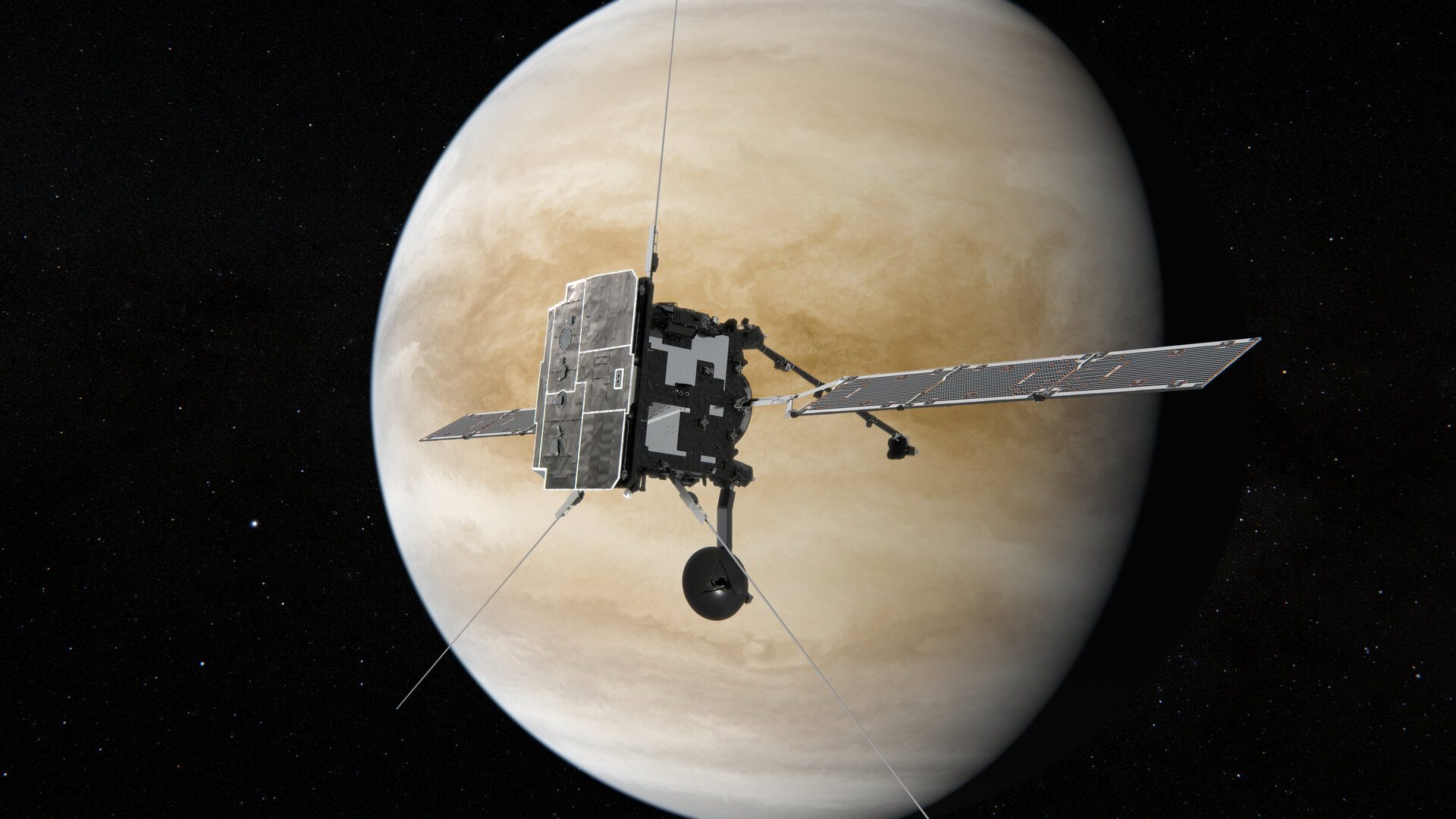
February 18, 2025
3640 views
43 likes
The European Space Agency (ESA) is set to navigate the ESA/NASA Solar Orbiter spacecraft during its closest approach to Venus yet.
This flyby marks a pivotal moment, significantly altering the craft’s orbit and enabling it to observe the Sun’s polar regions, areas invisible from Earth.
Investigating these regions is crucial for enhancing our comprehension of solar phenomena, space weather, and the Sun-Earth relationship.
A Closer Approach to Venus
Since its launch in 2020, Solar Orbiter has performed several gravity assist maneuvers around both the Earth and Venus to gradually tighten its orbit, bringing it nearer to the Sun. However, today’s encounter on February 18, 2025, is unprecedented in terms of proximity.
At 21:48 CET, the spacecraft will come within just 379 km of Venus. For context, astronauts aboard the International Space Station operate at an average altitude of 408 km above Earth.
“This close approach allows us to leverage the planet’s gravity to alter the spacecraft’s trajectory with minimal fuel consumption,” explains Julia Schwartz, a flight dynamics expert at ESA.
“Most planets in our Solar System orbit the Sun on a relatively flat plane. Today’s flyby will manipulate Solar Orbiter’s orbit to create a significant tilt, providing enhanced visibility of the Sun’s polar regions, which are otherwise obscured from this plane.”
Upcoming Venus flybys, such as the one planned for December 2026, will further alter the spacecraft’s orbit, allowing high-resolution imaging of the Sun’s entire polar regions.
With its distinctive orbit, this mission will deepen our understanding of solar activity and enhance our capacity to protect Earth’s technology from intense solar events and unpredictable space weather.
Handling High Stakes
Navigating so close to Venus presents several challenges for the team at ESA’s European Space Operations Centre (ESOC) in Germany. Precise calculations and minor corrections to the spacecraft’s path are essential before and after the flyby to maintain its trajectory.
“The flyby has been meticulously planned to ensure that we come close enough to Venus for optimal data collection while keeping the spacecraft safely above the planet’s atmosphere to avoid atmospheric drag,” states Sam Bammens from the Solar Orbiter Flight Control Team.
Despite this, the Solar Orbiter will still be exposed to significant thermal radiation from Venus during its passage.
“We anticipate that Solar Orbiter will experience considerable heating during the flyby. To prepare, our team conducted extensive simulations to assess the heating impact of the Venus gravity assist maneuver. Certain components of the spacecraft will endure a substantial temperature rise, but all parts are designed to operate within specified thermal limits,” adds Bammens.
“For some members of our control team, this is their inaugural flyby. Throughout the planning process, we’ve gained invaluable insights into interplanetary navigation, and we are thrilled for tonight’s event.”
Scientific Opportunities Await
Throughout this maneuver, Solar Orbiter will maintain its instruments and its heat shield directed towards the Sun to protect the spacecraft, meaning it cannot take images of Venus’s cloud tops during the flyby. However, it will still have opportunities to gather vital scientific information.
Unlike Earth, Venus lacks a protective global magnetic field to interact with the solar wind’s charged particles. However, a layer of its atmosphere, known as the ionosphere, interacts uniquely with the solar wind.
As the spacecraft travels past Venus, Solar Orbiter’s Magnetometer, along with its Radio and Plasma Waves sensors, will be activated to capture data on the planet’s magnetic and plasma environment. This information will further ongoing studies on the solar wind’s impact on planetary atmospheres beyond Earth.
ESA’s Venus Initiatives
Solar Orbiter isn’t ESA’s only mission with a focus on Venus this year. ESA’s Juice spacecraft, on its journey to Jupiter to investigate its icy moons, will also make a flyby of Venus in August.
Solar Orbiter and Juice will pass Venus just 194 days apart – a period shorter than a single day on Venus, which lasts 243 Earth days. These timely missions underscore the planet’s significance as a gateway for ESA’s interplanetary explorers.
While both Solar Orbiter and Juice will make fleeting visits to our closest neighbor, several ESA missions have aimed for longer-term study. For instance, ESA’s Venus Express conducted in-depth studies of the planet’s atmosphere, clouds, and surface temperature from 2006 until its mission concluded in 2014.
Looking to the future, ESA’s Envision mission is slated for launch in the early 2030s, promising to provide a detailed understanding of Venus from its inner core to its upper atmosphere. This mission will play a key role in helping scientists discern how and why, despite starting with similarities, Venus and Earth have developed such divergent evolutionary paths.









